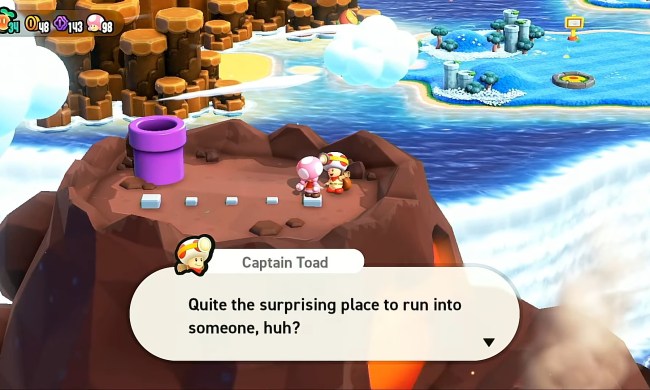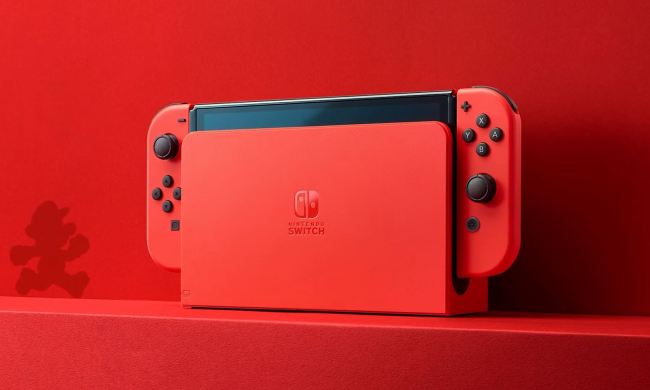“Super Mario Party Jamboree – Nintendo Switch 2 Edition + Jamboree TV keeps the party going, but puts up a few too many roadblocks.”
- Core game is still a blast and looks and runs better
- Some excellent new minigames
- New modes add fun new twists
- Camera minigames fall flat
- Bowser Live and Carnival Coaster have little replay value
Last year, Nintendo wrapped up its trilogy of Mario Party games with its most ambitious title yet in Super Mario Party Jamboree . With more minigames, boards, and modes than any entry before it, it was bordering on losing its focus on the core board game gameplay that makes it such a popular and approachable series. That makes it a natural choice for a proper Switch 2 Edition to bring us back for a little afterparty to show off some new tricks.
Despite the seemingly obvious potential for DLC , no Mario Party game has gotten any meaningful expansion before now. Super Mario Party Jamboree – Nintendo Switch 2 Edition + Jamboree TV is the perfect opportunity to break that tradition by taking advantage of the new features found on the Switch 2 to add creative new games and modes. It mostly makes good on that promise, but the way they are integrated into the existing experience only exacerbates the main issues the core game had. With so much tacked on to it now, it has started to lose its appeal as a casual party game experience.
Jamboree TV isn’t as bloated and cumbersome as its full title, but it flies dangerously close. There are some standout new additions that take full advantage of the Switch 2 hardware, but those that miss the mark fall very flat, and there are simply too many barriers between you and the fun to make this an instant RSVP.
Menu madness
Jamboree TV presents itself as an entirely new menu option from the home screen, doubling down on the segmented structure of the original. The base game already felt oddly divided with its various modes locking certain games and features from the core game, and this only further complicates what should be a simple pick-up-and-play party experience rather than unifying the experience. The fact that there are now two ways to engage in the core Mario Party mode, but I can only select the new rules if I engage it from within the new Jamboree TV package, or transition over to the Rhythm Kitchen or Bowser Challenges from the original Super Mario Party menu, is needlessly convoluted. It’s like hosting a party and having the drinks in the kitchen and snacks in the shed out back.
swapping between the new Jamboree TV and classic modes is as much of a momentum killer as swapping between different games
The original experience was already the most segmented Mario Party yet, with its various islands housing unique modes and minigames. Jamboree TV adds even more of these smaller, supplemental ways to play to complement the main game, but cordons them off in a way that kills off any desire to swap between them once I started playing. Whether it is with friends locally or online, swapping between the new Jamboree TV and classic modes is as much of a momentum killer as swapping between different games. That might not sound like a big deal, but for a game built around the idea of a group of friends picking up some controllers and having a good time, these barriers throw a major wrench in the gears.

That core game is still just as solid as ever. There are no new boards here, but playing the classic Mario Party mode (so long as you select it from within Jamboree TV ) does incorporate the new slate of mouse-control games to spice up the selection. Also exclusive to the Jamboree TV version is the camera integration. None of the camera-specific minigames will show up in Mario Party, but each player’s face will appear beside their character moving around the board, during minigames, and in a few other cute ways. I was ready to brush this inclusion off as a gimmick, but seeing myself and my friend’s reactions during play encouraged a level of silliness that felt right at home.
It’s all in the wrist
Everything inside the regular Super Mario Party Jamboree menu of the game is just as you left it on the Switch, only with mildly improved visuals and performance. Loading up Jamboree TV sets up the new gameshow-esque framing for the new slate of options.
Tag Team Rules is the standout mode I will keep coming back to Jamboree TV for
Mario Party mode sees two new rules that are easily the most exciting additions. Frenzy Rules offers a quick and chaotic way to jump right to the most exciting parts of the game by starting the game in the Homestretch. With only five turns remaining, each player starts with 50 coins, a Double Dice item, and one Star, plus all the Homestretch modifiers to the board in play. While it does lose a lot of the emotional payoff you get when reaching the end of a 20 or 30 round game, it is a fun way to get a quick hit when you don’t want to invest an hour or more in a full game.
Tag Team Rules is the standout mode I will keep coming back to Jamboree TV for. This mode pairs players up into teams of two that essentially function as Jamboree Buddies for one another. Teams share coins, items, and Stars, but still operate independently on the board. However, the new Together Dice can be used by one team member to summon and roll with their partner to move together. Just like a Jamboree Buddy, everything is doubled while a team is moving together, from coins and items earned to the number of Stars that can be purchased. Having a dedicated partner to coordinate with and strategize with nails that balance of adding a new layer to the core game without veering into gimmick territory. This was where I spent most of my time and the mode that I see being included in my regular rotation.
Tag Team is also the best way to get a taste of the new mouse control minigames since they can only be played in 2 vs. 2, 4-player, or Battle Mode configurations. That restriction makes sense for a few of these games, but I saw no benefit for the majority to not be playable in a traditional free-for-all style. Very few rely on any direct teamwork or coordination between players to justify locking them to those less-common playlists.
the majority of games feel like a nice appetizer for what a Switch 2 exclusive Mario Party could look like

With a few exceptions, the majority of these new mouse minigames are fun and creative hits. Some like the air hockey equivalent or letter sorting game are borderline copies of older minigames, but work so much better using a mouse that I can forgive them being recycled. Pull-Back Attack, which has teams racing in opposite directions across a bridge with pull-back cars, might be my new favorite game in the entire package. It takes only a second to learn, even if you’ve never played with the toy in real life, and the HD rumble from the Joy-Con felt while pulling the mouse back fully communicates how much power you are giving. Another standout revolves around dragging a Toad through a maze without touching the edges.
There are a few same-y feeling games that revolve around flicking objects from one side of the screen to the other with the mouse, but the majority of games feel like a nice appetizer for what a Switch 2 exclusive Mario Party could look like.
Not ready for a closeup
Carnival Coaster is almost exactly on par with something like Paratroopa Flight School. That is to say, I had a good time playing through each course once, but have no reason to revisit it unless a friend wanted to give it a shot. This mode is a literal rail shooter with minigame breaks scattered throughout. While riding the coaster, players use the mouse to aim and fire at enemies along the course to extend the timer. Whenever the coaster makes a drop, you can also raise your hands up in the air to add more time, which turned out to be a slightly more interesting twist since I found myself scrambling to get my Joy-Con back down and aiming again when enemies appeared right after a drop.
This mode exclusively uses mouse control minigames in a team format, playing against the clock. The faster you and your team can complete the minigame (or the higher the score you can get, depending on the game), the more bonus time you get for the next leg of the coaster. Each course lasts no more than 10 minutes, minigames included, and offers no real incentive to go back aside from setting high scores. The actual rail-shooting is functional, but the courses and enemy patterns aren’t exactly thrilling or challenging.
Aside from seeing yourself alongside your character in Mario Party mode or Carnival Coaster, Bowser Live is the only mode where the camera and microphone take center stage. It is also the most throwaway mode in the game. After picking between either camera or microphone games, which are mutually exclusive for some reason, two teams of two compete in three games that take all of about 3 minutes total. I say three games, but the last one is always the same, so it is effectively only two. I can see the camera games being fun for younger kids since they involve jumping, squatting, and tilting, but there are so few and they are over so fast that I can’t imagine them holding anyone’s attention for long. There’s also a distinct lack of creativity in the camera games for how much potential there is for Nintendo to mine. They all play things very safe, perhaps due to the camera’s inconsistent tracking.

The microphone games had some better ideas behind them besides just being loud. Clapping to the beat or using your voice to control a Flappy Bird- like game works better than I expected, until the other people in the room realized how easily it was to sabotage the team playing. You’ll have to hope your group is willing to play fair in these games. Or not. That’s the Mario Party way, right?
Super Mario Party Jamboree – Nintendo Switch 2 Edition + Jamboree TV is a microcosm of the base game in every way. It adds some meaningful new ways to play the core board game experience that has never been better, plus some additional bonus modes that offer a nice, if shallow, distraction. Jamboree TV just makes navigating and accessing what you want even more of a chore by relegating everything behind multiple menus and loading screens. But the biggest sin is how few big swings Nintendo took here. It once again feels more like a testing ground than a full commitment. This isn’t so much a bigger, better party but an invitation to a party with all the same people across town. There’s fun to be had, but sitting through traffic between sure does kill the vibes.
Super Mario Party Jamboree – Nintendo Switch 2 Edition + Jamboree TV was tested on the Switch 2.




